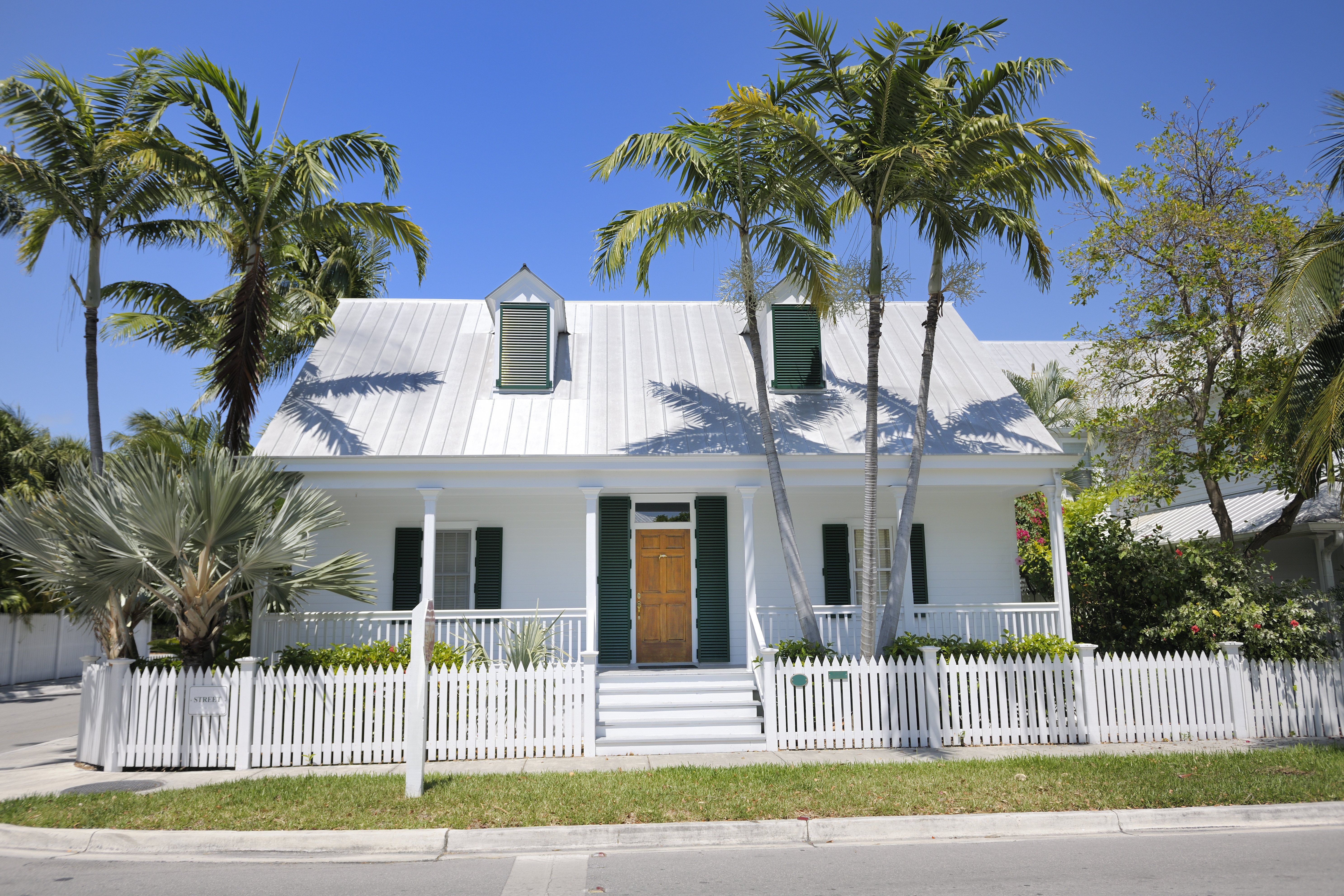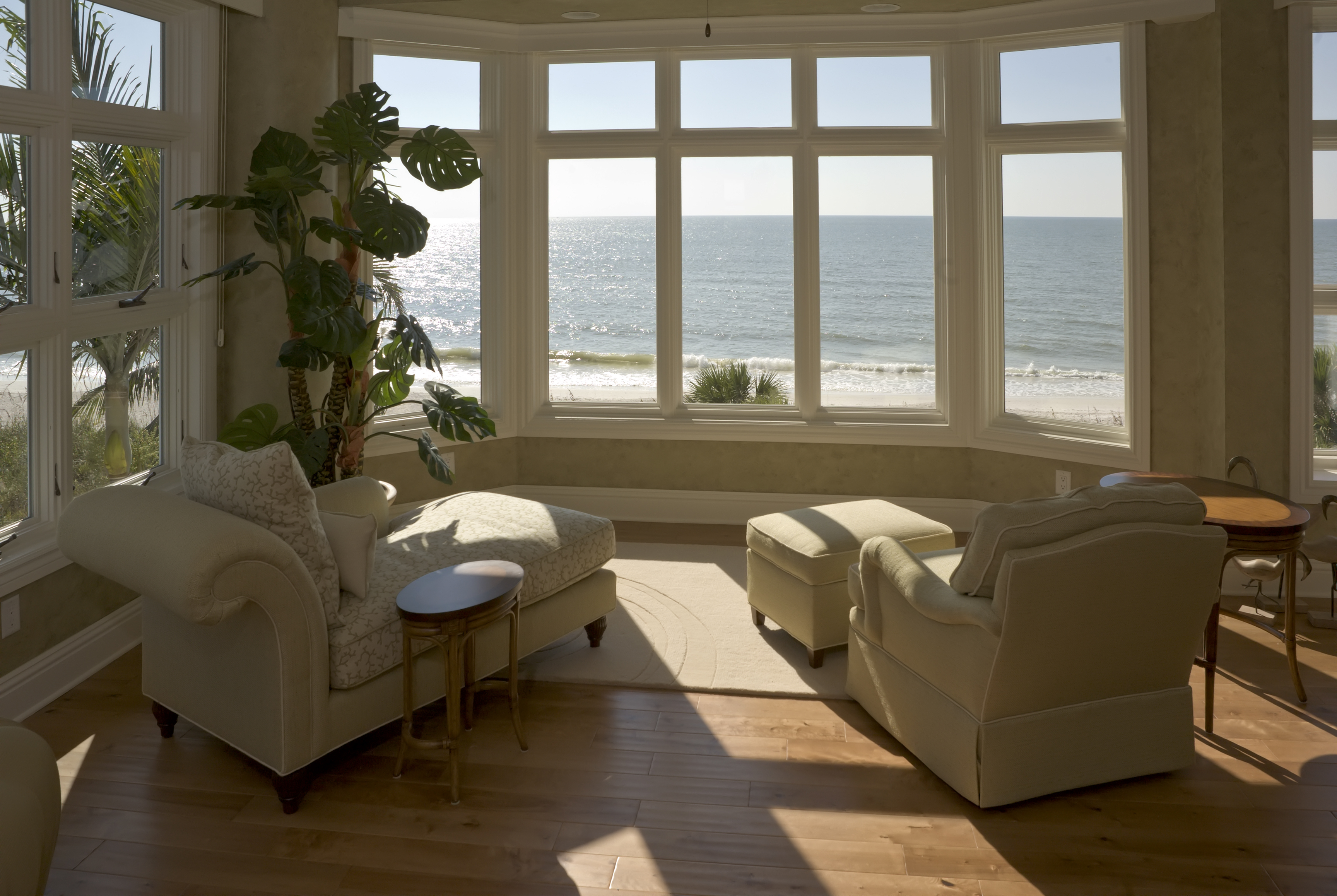Get Answers to All Your Window and Shutter Questions

“How much is this going to cost me?” “Will it make my family any safer?” “Is it going to add value to our property?” With all the questions involved in choosing the best impact-resistant windows and hurricane shutters for your home, researching which ones to buy can be exhausting—but you’ve come to the right place. Scroll through our answers to some of the FAQs about this subject so you can make a more informed decision.
- Which kinds of windows are hurricane-proof?
Here are two of the best categories of products that can protect windows from hurricane damage:- Laminated Security Glass: Picture two panels of durable glass covering either side of a thermoplastic interlayer of impact-resistant glass. How impact-resistant this glass is depends on its composition, but if storm debris is hurled at it, it’ll usually stay in its frame instead of exploding into shards (though it may crack).
- Polycarbonate and Acrylic Panels: Heard of bomb-blast-resistant windows? They’re made from these types of panels. When you set them in heavy framing, they create the strongest hurricane barrier on the market—so durable that it can also shield you from bullets, forced entries, and, yes, bombs.
- How much do hurricane-proof windows cost?
On average, impact windows cost about $8,386, with the majority of quotes price tagged between $2,668–$14,183. Sliding glass doors with vinyl frames and no grids will put you out around $6,140 (budget on spending anywhere from $4,200–$8,320). The bigger the door or the window, the thicker the glass installation will need to be, which can nudge up the cost—as can custom colors and grid patterns. - What’s the difference between hurricane windows and impact windows?
One or more layers of laminate PVB hold together hurricane windows, which can give them the flexibility to bend (but not break) beneath the rage of oceanborne gales. Well, sometimes hurricane windows do break—but the laminate causes the glass to fall rather than shatter. Built with thicker panes, reinforced frames, and multiple layers of glass, impact windows are less flexible but more stable than hurricane windows. They can insulate you from wind, but also from storm debris. (Imagine a hurricane whirling a lawn chair at your house. Impact—not hurricane—windows can block that particular volley.) - How much wind can hurricane windows take?
Short answer: Winds up to 200 miles per hour. Long answer: Hurricane and impact windows have a design pressure (DP) rating that specifies how much wind they can take before they bend or break. DP ratings vary depending on where the windows are located in a house, the dimensions of the house, if the house is built inland or on the coasts, among other factors. Homeowners in Florida should probably install hurricane rated windows with a DP 50, which means they can hold up against most Category 5 winds. (Although not necessarily against the debris that could be thrashing around in those winds.) - Are hurricane windows single-pane?
No. Hurricane windows are made with two or more panes of glass bonded together. To distinguish a single-pane window from a hurricane window, count the number of images in the glass. Your reflection will show up once in a single-pane window—but it’ll show up as many times as there are glass panes in a hurricane window. (Two panes, two reflections. Three panes, three reflections.) You can also look at the permanent mark in the glass that lists the hurricane window’s supplier, the manufacturing date, and the safety certifications. If you’re still unsure, ask a window installation company to inspect it. - Do impact windows increase home value?
The experts disagree on this one. Some window companies will tell you that hurricane windows give you back a 75–85% ROI. Realtors see it differently: Buyers in the luxury market expect impact or hurricane windows, but plenty of other buyers purchase homes with far weaker storm protection systems. Property is a tricky investment, and the impact of impact windows on your home’s value may come down to the buyer’s preferences and the temperature of the market at the time. - Are there different grades of impact windows?
Yes, indeed. Let’s backtrack to the concept of “design pressure,” because we gave you the CliffsNotes version of that metric. DP ratings are premised on three components: air infiltration, water infiltration, and structural load. But DP ratings only have to meet two of those three components. Hence the introduction of performance grade (PG) ratings, which have to pass all three component standards—as well as other auxiliary criteria like ease of operation and resistance to forced entry. - Do impact windows reduce heat?
Yes. Another way that manufacturers and architects assess impact windows: The solar heat gain coefficient (SHGC), which measures how much solar radiation passes into your home through windows and doors. A lower SHGC indicates that your windows are blocking solar radiation, helping you minimize heat gain in the summer and keep your home cool in the winter (if you’re in Florida in the winter, that is). The US Department of Energy has claimed that replacing single-pane windows with energy-efficient windows can save homeowners roughly $125–$465 in utilities per year.

Hurricane Shutters Questions
“Hurricane windows” and “hurricane shutters” sound so similar that you’d be forgiven for getting them mixed up. But while hurricane windows are installed inside of a house like normal windows (except that they’re stronger and multi-paned), hurricane shutters are affixed to the outside of a house, covering the windows. Hurricane shutters can be louvered Bahama shades painted indigo and tilted outward to let the seabreeze in—or they can be plywood planks. Here are our answers to some commonplace queries about hurricane shutters.
- When should I put up hurricane shutters?
Put up or close up your hurricane shutters when a hurricane watch is in effect for your area. A hurricane watch is issued 48 hours before hurricane conditions are predicted to set in, whereas a hurricane warning occurs 36 hours before the storm is supposed to start. We’ll say it again: Close those shutters when you hear the hurricane watch. And pay special attention to the upkeep of your hurricane shutters during hurricane season, which generally lasts from June–November. - Are accordion shutters hurricane-proof?
Accordion shutters are not hurricane-proof—or even as strong as impact windows—but they do help shield your house during a storm. They resemble those rollup metal doors covering city storefronts at night, except they usually fold up horizontally rather than vertically. Made of metal or polycarbonate, they’re permanently installed over windows so that all you need to do is unfurl them whenever a storm approaches. Standard building codes require hurricane shutters to withstand 110 mph winds. - Are hurricane shutters cheaper than impact windows?
Yes. Remember how impact windows cost, on average, $8,386? The national average cost to install hurricane shutters is roughly half that—$3,871. Homeowners generally pay $90–$400 per window and $30–$65 per hour to put in impact windows—while they pay $5–$60 per square foot of materials and $45–$100 per hour to put up hurricane shutters. One impact window should take two hours to install. Depending on their style and size, seven square feet of shutters should take about one hour to install. - How much are hurricane shutters?
Some commonly used types of hurricane shutters, listed from most to least expensive:- Roll-Up or Roll-Down: $25–$60 (per square foot)
- Colonial: $25–$35
- Bahama: $20–$35
- Accordion: $15–$30
- Storm Panel: $10–$20
- Clear Polycarbonate: $10–$15
- Fabric Screen: $5–$15
- Plywood: $2–$6
- So which is better—impact windows or hurricane shutters?
This is a toughie, because much of the decision comes down to your budget and house. If you’ve got $4,000 to play with, shutters will fortify your house against most hurricanes. But if you can afford the impact windows, they’re worth the additional $4,000. They lower your electric bill. They provide security against burglars. They reduce noise and UV light. And they give you protection round-the-clock, so you’re not scrambling around your house fastening shutters the moment bad weather starts brewing.
Get the Facts—And Get Started
As catastrophic weather events become more frequent, many homeowners in states like Florida are investing in storm protection upgrades that can keep their property intact during a hurricane. Ygrene’s energy-efficient financing can help pay for impact-resistant windows, shutters, and doors—plus wind-resistant roofing and backup generators. Now that you’ve got some answers to your questions about impact windows and hurricane shutters, get your next home improvement project started today.




